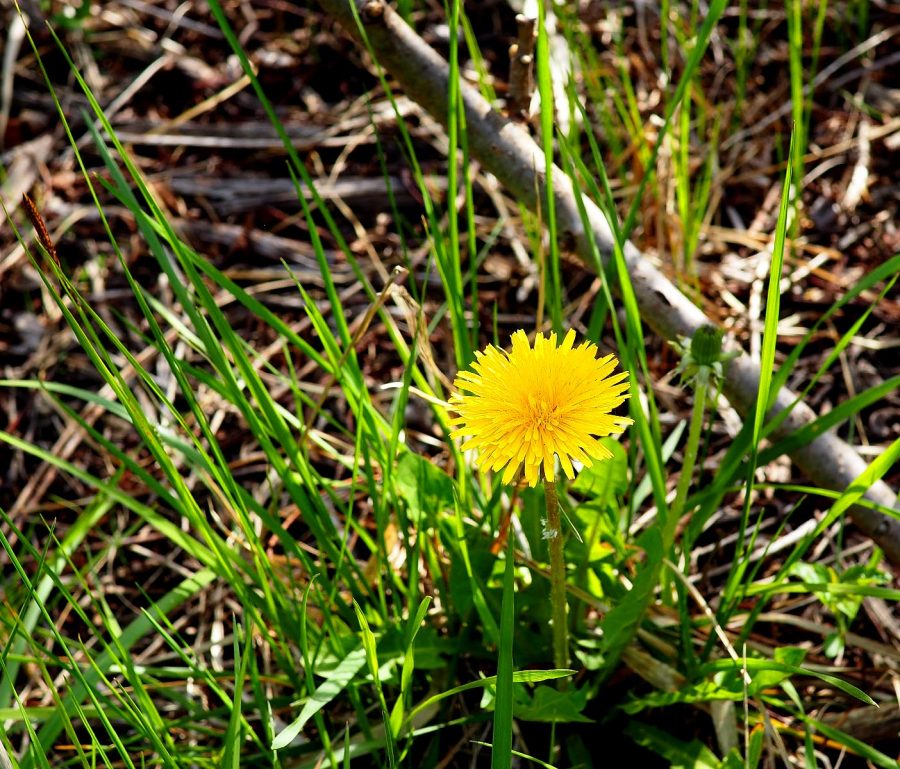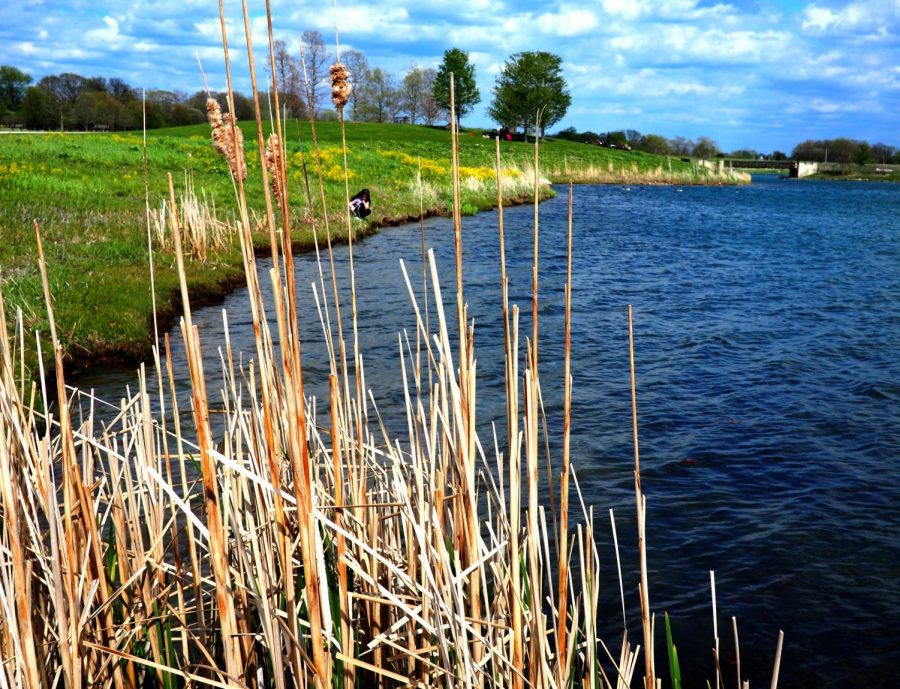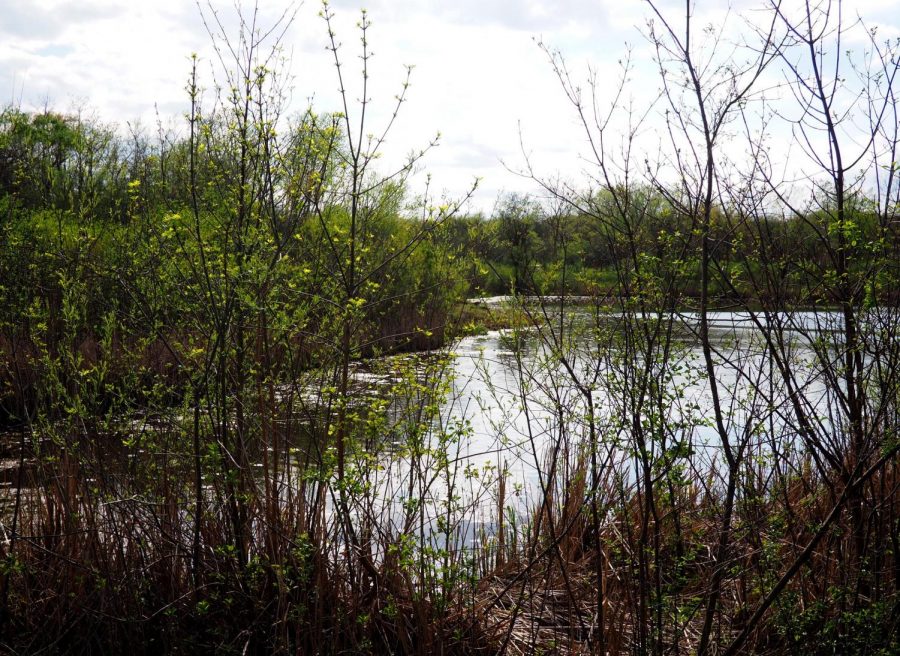Native and non-native species in your backyard
Katherine Thomey, Staff Member
Lake County is home to scores of forest and nature preserves filled with bustling habitats of plants and animals. Within these ecosystems reside life forms native to the area, ones that naturally occur without human influence, and non-native species, ones that exist in the area due to human intervention.
While native plants thrive in the conditions of their natural habitat, many non-native or invasive species pose threats to these habitats, competing with native plants for resources. This guide reveals both the beauty of the nature surrounding our homes while also discussing the qualities of these life forms and relationships they have with their surroundings.
(Note: In addition to the sources listed individually on each page, information was also gathered from the Lake County Forest Preserves.)

Redbud – Cercis canadensis – native
Blooming from March-May in a stunning display of pink flowers, the Redbud tree typically reaches heights of 15-30 feet and is popular as ornamentation. It is pollinated by a variety of bees that are attracted by both the tree’s nectar and pollen. The flowers and buds are high in vitamin C and can be eaten alongside the young pods, which are consumed raw, boiled or sauteed. When the tree’s twigs are...

Wild Geranium – Geranium maculatum – native
While only the leaves are shown above, this plant develops into a five-petaled flower that may be pink, white or lavender. The seeds attract doves, quail and deer, while honeybees and bumblebees are the most common pollinators of the flowers. Native nations used the entire plant as a tea for diarrhea as well as a rinse for a sore throat and mouth ulcers. Sources: Wisconsin Horticulture Lady Bi...

Quaking Aspen – Populus tremuloides – native
Pictured here is a very young Quaking Aspen, but at maturity, it transforms into a 35-59 foot-tall tree. The wood has many uses, including its development into pulpwood and boxes while the tree bark and foliage are consumed by numerous mammals such as deer, beavers and sheep. Aspen trees generally grow in groves, connected by a system of underground roots. They are prone to diseases and are often deepl...

Woodland Phlox – Phlox divaricata – native
These small, colorful flowers attract a number of butterfly species and have their roots consumed by rabbits and voles. Varying from blue-violet, red-purple and white shades, this Phlox species produces both fertile and infertile shoots that are fairly similar in appearance. It only reaches eight inches tall when fully mature but can spread 18 inches. Sources: Minnesota Wildflowers illinois...

Pennycress – Thlaspi arvense – non-native
This invasive plant tends to reside on cultivated land rather than undisturbed natural habitats. Pennycress leaves are edible but develop a very bitter taste when the plant develops flowers. There is an increasing biodiesel market centered around pennycress, and the seed meal left over after the plant’s oils have been extracted can be processed into plane fuel, livestock feed or human protein additives...

Amur Honeysuckle – Lonicera maackii – non-native
This honeysuckle plant was sold in North America as an ornamentation beginning in the late 1800s until its invasiveness was recognized and its sale banned in many states. Birds, mammals and water movements spread its seeds and once it reaches a habitat, it can drastically upset the ecosystem’s balance. By producing leaves early in the spring and losing them late in the fall, Amur Honeysuckle poss...

Canada Goose – Branta canadensis – native
These intimidating and territorial creatures forgo migration from Illinois if they have access to ice-free water and a food supply. Canadian geese are known for their aggressive nature and feces production, often causing excessive algae growth in lakes due to the high organic phosphorus content of the waste. They have found a comfortable home in our local suburbia with the food and security provided ...

Common Dandelion – Taraxacum officinale – non-native
This weed seen scattered across yards and alongside sidewalks worldwide is actually native to Europe and was purposely brought to America by settlers. Because of the ball of fluff that develops on the stem, hundreds of seeds are easily carried by the wind and spread miles away, making them difficult to contain and difficult to exterminate. Despite its easy invasion of native ecosystems, dandelions d...

Broad-leaved Cattail – Typha latifolia – native
Cattails have historically held numerous and diverse purposes to serve human needs. The rootstock, young shoots, young flower spikes and sprouts at the tip of the rootstock are all edible, while even the plant’s pollen can be used as flour. Native nations used numerous parts of the cattail for medicinal purposes, addressing such ailments as burns, diarrhea and dysentery. While there’s evidence of its...

Blackhaw – Viburnum prunifolium – native
With white flower clusters that blossom in the late spring, this shrub’s nectar and pollen draw in various small bees, butterflies and hummingbirds, among other creatures. The yellow berries that surround its flowers turn a blue-black color, and its green foliage transforms into a reddish-purple color during the fall. When matured, Blackhaw becomes sturdy, reaching heights of 12-15 feet. &nb...

Bird’s Foot Trefoil – Lotus corniculatus – non-native
Originally introduced into the U.S. to mitigate erosion and feed livestock, this yellow-flowered legume sprawls across vast areas of the ground and threatens the viability of native plants. It blooms from late April or early May until mid-September and can be seen with red-tinted flowers as well. Despite its invasion of native ecosystems, the plant is used by bees as a source of nectar and by butterflies...

Autumn Olive – Elaeagnus umbellata – non-native
This shrub is native to East Asia, was brought to the United States in 1830 and was planted in part as a restoration method for deforested lands. It spread across the Midwest and Mid-Atlantic regions of the country with the aid of birds and other wildlife who consume its fruit. Because its seeds are produced at a high rate, it is able to rapidly spread across the habitats it invades, leaving nitrogen-saturated...
Drops of Ink • Copyright 2025 • FLEX WordPress Theme by SNO • Log in

